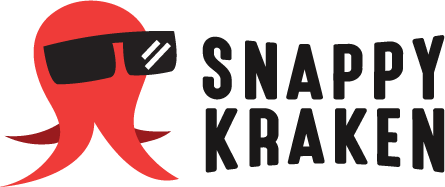A Few Key Takeaways — Kitces Report
The Kitces Report: The Technology That Independent Financial Advisors Actually Use (And Like) offers a rare window into how firms are truly using technology. It goes beyond vendor promises and shiny demos to uncover what actually drives results inside advisory practices.
At Snappy Kraken, we find this research invaluable. With more than 200 pages of independent analysis across dozens of AdvisorTech categories, the report provides clarity on what’s working, what’s changing, and where the industry is headed.
Here are a few key takeaways from this year’s findings.
1. Technology usage & benefit
Let’s start with technology usage across firms, over the past two decades, the number of AdvisorTech solutions available to firms has grown dramatically.
Today, a typical advisory firm allocates 4%–6% of its annual revenue to technology, using around 12 different software applications to implement 20 business functions out of the 45 tracked in the Kitces Report.
Remarkably, even the least technologically sophisticated firms still average 10 tools supporting 16 functions—a clear sign that technology has become essential to modern advisory firms.
The Kitces Report makes it very clear: firms that use technology to enhance the client experience—not just improve efficiency—are the most successful.
- Nearly 8 in 10 advisors believe the most important role of technology is to improve the quality of advice or the client experience, not to reduce costs or optimize advisor time. Only about 2 in 10 hold an efficiency-first philosophy.
- Firms with client-centered philosophies (focused on client experience and quality of advice) report far stronger revenue outcomes than efficiency-centered firms—about $500,000 in revenue per advisor vs. $300,000, and $1M–$1.2M in total practice revenue vs. $400,000–$600,000.
The implication is clear: advisors who use technology to go deeper in client relationships and advice delivery outperform those who try to use it primarily for time- or cost-savings.
2. Integration is the single biggest driver of advisor satisfaction with their technology stacks
The report notes that integration “enables the various parts of the advisor tech stack to function as a cohesive whole.” Yet most firms still struggle here: fewer than one-third of advisors report that data flows automatically across their main applications, and only 10% have fully integrated workflows beyond those core systems. Advisors who fail to
integrate often report the worst outcomes, while those who successfully implement integrations—especially between best-in-class tools—see much higher satisfaction.
Spending more on technology does not drive satisfaction by itself. The differentiator is how well tools are integrated and used. Firms that integrate best-in-class solutions effectively are happier.
In short, the research shows that integration isn’t just a “nice to have”—it’s the foundation for making the rest of the technology stack effective.
3. AI: Interest without adoption
The Kitces Report shows advisors broadly agree AI will deliver productivity benefits over the next two years—38% are optimistic, 22% are skeptical, and 40% are moderate in their outlook. Most expect AI to help expedite (57%) or initiate (15%) tasks, but far fewer (28%) view it as a tool for full automation. This highlights that advisors want ‘human-in-the-loop’ AI, not hands-off solutions.
Despite the interest, AI adoption remains limited. Today, advisors most often use AI for document review (20%), while over half express interest in future applications such as client data gathering, financial plan prep, and investment analysis. The one area where advisors showed little interest? Replacing client service.
The takeaway: Advisors see AI as a tool to save time for more client-facing work, not to remove themselves from the process. But until firms move from curiosity to intentional adoption, AI’s promise will remain mostly unrealized.
4. The three I’s of technology sophistication
The Kitces Report (page 62) identifies a powerful framework for understanding how advisory firms use technology most effectively: the Three I’s.
These dimensions separate the most advanced firms from the rest:
- Incorporation – The breadth of business functions supported by technology. This includes core systems like financial planning, CRM, investment research, document management, eSignature, fee billing, and client portals. Advanced firms incorporate technology broadly across functions.
- Integration – The extent to which data flows automatically across applications. Advanced firms don’t just adopt tools—they connect them, achieving seamless integration at least across their main applications.
- Intentionality – The deliberate steps firms take to maximize impact from their technology. This can mean designating a technology trainer, tying staff incentives to effective use, or embedding adoption goals into firm processes. The most advanced firms demonstrate intentionality in multiple ways.
Using these three measures, the report classifies firms into four categories of tech sophistication:
- Tech-Essentials: Not sophisticated in any of the three I’s.
- Tech-Emerging: Sophisticated in one of the I’s.
- Tech-Enabled: Sophisticated in two of the I’s.
- Tech-Driven: Sophisticated in all three I’s.
Where Are You on the List?
The Kitces Report makes it clear: every firm is using technology, but the ones that stand apart are those that embrace the Three I’s—Incorporation, Integration, and Intentionality.
Where does your firm fall on that spectrum?
If you’d like to explore how your practice can move closer to being Tech-Driven—with websites that convert, digital marketing that engages, and seamless integration with your key technologies—we’d love to talk. Schedule a demo here.
5. The importance of objective research: recognition in the report
One of the reasons the Kitces Report is so widely valued is its independence.
At over 200 pages, it doesn’t just highlight tools—it provides objective, data-driven analysis of how advisors actually use technology, where it succeeds, and where it falls short.
In a marketplace often filled with marketing hype, this kind of impartial research is essential.
Recognition in the Report
We’re especially thrilled to see Snappy Kraken highlighted in this year’s research. Our Advisor Websites platform was recognized as an exception in its category:

As the report notes:
“However, platforms that are more RIA-centric, such as Advisor Websites, perform significantly better in satisfaction metrics. Advisor Websites, in particular, stands out as an exception amongst advisor-focused vendors, maintaining satisfaction levels that are competitive with, or slightly higher than, the best generic platforms.”
Snappy Kraken’s digital marketing platform also stood out:

As the report states: “Only Snappy Kraken managed to achieve an above-average satisfaction rating of 7.4.”
Why does this matter? Because, as the Kitces team notes, customer satisfaction is one of the most important indicators of true advisor technology success.
Closing Thought
The Kitces Report makes one thing clear: success with technology isn’t about adopting more—it’s about adopting with intention. Firms that use tech to engage clients, integrate their systems, and execute with purpose are the ones growing faster and delivering more value. We’re proud to be part of that journey and grateful to the Kitces team for producing such objective, data-driven research that helps move the entire profession forward.
The Kitces Report is packed with insights far beyond the few we’ve highlighted here. At more than 200 pages, it’s the kind of research we’ll be coming back to again and again—not just today, but throughout the year—as we continue to explore how advisors can use technology with intention to drive engagement, integration, and growth.
Book A Demo Today
Discover how Snappy Kraken helps advisors grow with a powerful marketing system
Request a demo

